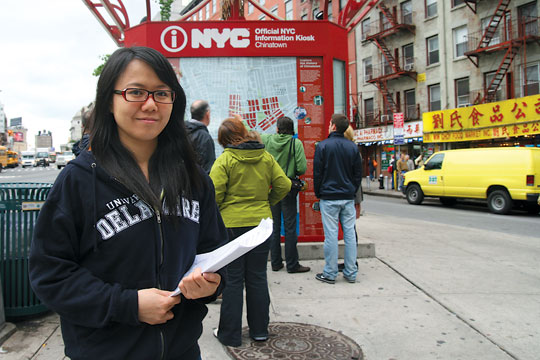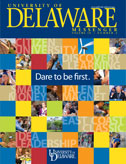Chinatowns create a cultural enclave

RESEARCH | Imagine attending graduate school at a Chinese university where your thesis research is about an enclave of American expatriates in the middle of Beijing or Shanghai known as “Americatown.”
That is essentially what Ying Xu, a graduate student at UD’s Center for Historic Architecture and Design, is doing as she conducts research on the development and functioning of Chinatowns in the United States, with a special focus on New York City.
Xu says the purpose of her research is to determine what influenced the establishment of Chinatowns across the United States, to examine their intangible aspects—including the lives and experiences of Chinese immigrants—and to look at the landscape and buildings that were significant in Chinatown’s history.
She says she was intrigued when she first arrived in New York from China in 2008.
“What shocked me was the seemingly irreconcilable paradox of Chinese traditionalism and American modernism: an old town against lower Manhattan’s skyscrapers,” Xu says. “Although Chinatown is not exactly a real reflection of a city or town of today’s China, it does represent the Chinese cultural atmosphere.”
Her research shows how New York’s Chinatown emerged, as Chinese immigrants sought economic and social refinement. They differentiated from their European counterparts and established their own enclave, building their own schools, churches, clubs, media and shops.
Many cultural traditions are visible in Chinatown today, Xu says.





